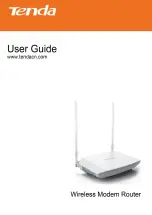
LN920 HW Design Guide
1VV0301730 Rev. 1
Page 56 of 81
2021-08-11
Not Subject to NDA
8.
GNSS SECTION
The LN920 module includes a state-of-art receiver that can simultaneously search and
track satellite signals from multiple satellite constellations. This multi-GNSS receiver
uses the entire spectrum of GNSS systems available: GPS, GLONASS, BeiDou, Galileo.
GNSS Signals Pin-out
Table 28: GNSS Signals Pin-out
RF Front End Design
The LN920 GNSS receiver contains an integrated LNA and pre-select SAW filter.
This allows the module to work properly with a passive GNSS antenna. If the antenna
cannot be located near the module, then an active antenna (that is, an antenna with a low
noise amplifier built-in) can be used with an external dedicated power supply circuit.
8.2.1.
Guidelines of PCB Line for GNSS Antenna
The following guidelines should be followed when choosing and integrating a GNSS
antenna:
•
Make sure that the antenna line impedance is 50
Ω
•
Keep the antenna line on the PCB as short as possible to reduce losses.
•
Antenna line must have uniform characteristics, constant cross section, avoid
meanders and abrupt curves.
•
If possible, keep one layer of the PCB used only for the Ground plane.
•
Surround (on both sides, above and below) the antenna line on PCB with Ground,
avoid having other signal tracks facing directly the antenna line.
•
The ground around the antenna line on PCB must be strictly connected to the
Ground Plane by placing away once per 2mm at least.
•
Place EM noisy devices as far as possible from antenna line.
•
Keep the antenna line as far as possible from power supply lines.
•
Keep the antenna line far away from cellular RF lines.
Pin
Signal
I/O
Function
Type
















































